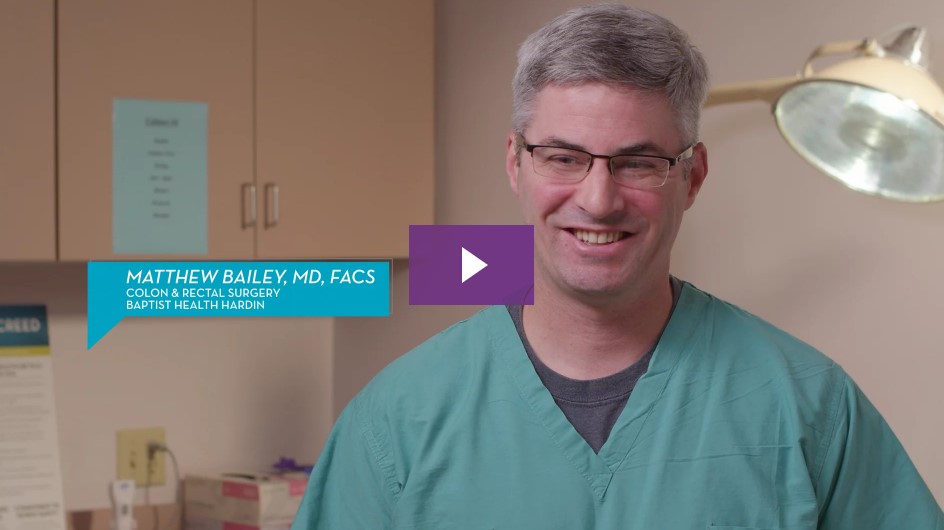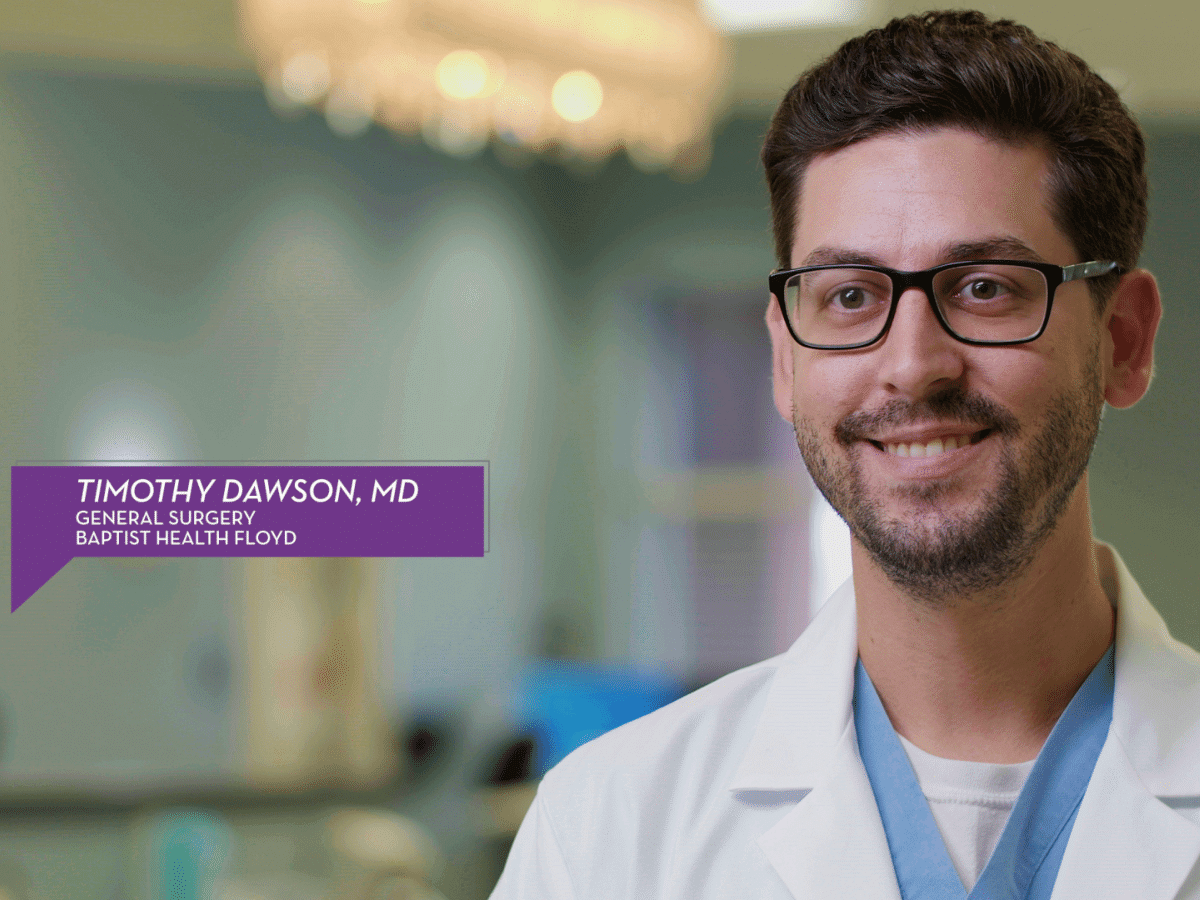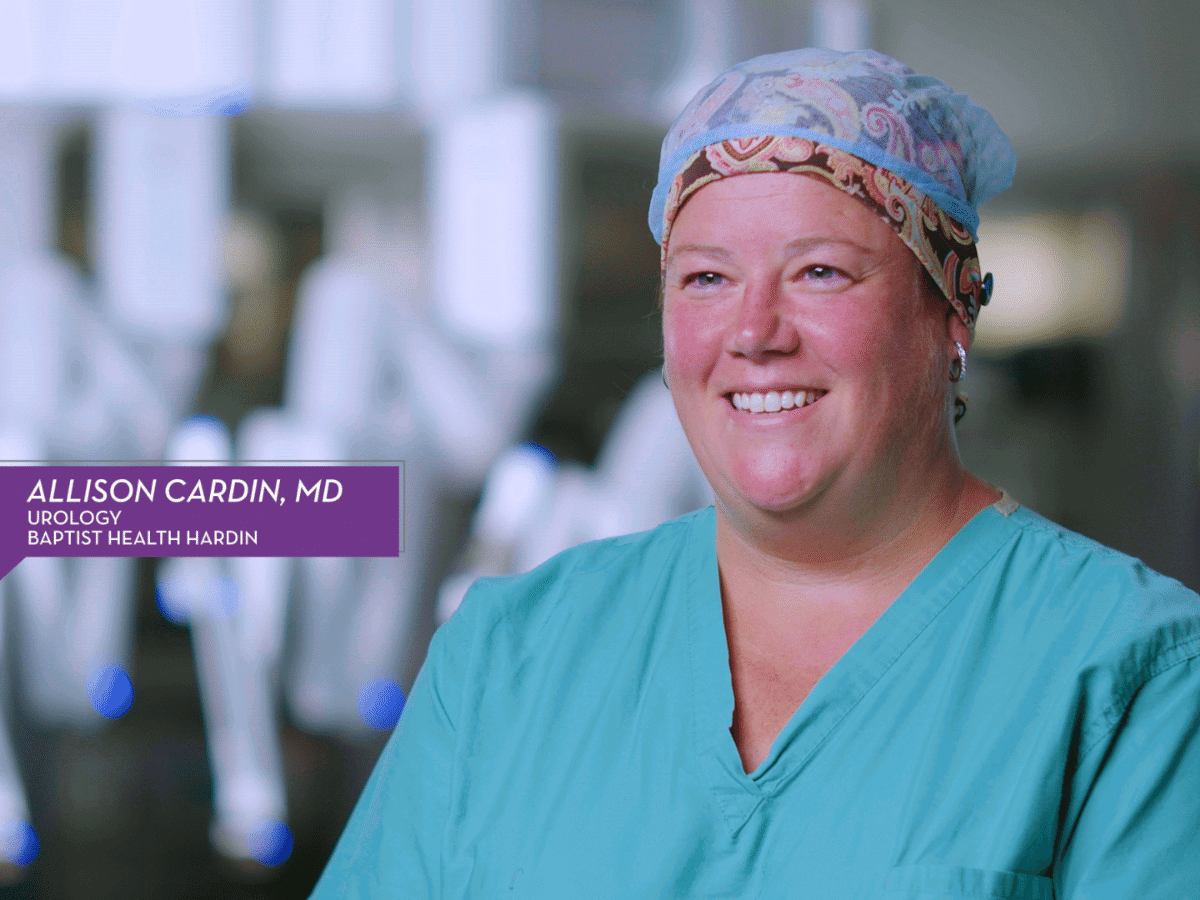Hiatal Hernia Repair in Elizabethtown, KY
Baptist Health Hardin: Hiatal Hernia Repair
Baptist Health Hardin offers hiatal hernia surgery, specializing in robotic hiatal hernia repair. Robotic repair is a minimally invasive approach. Learn more.
Hiatal Hernia Repair in Elizabethtown, KY, HealthTalks Transcript
Matthew Bailey, MD, FACS, General and Colorectal Surgery:
A hiatal hernia is where the stomach pushes up through the diaphragm or the breathing muscle. First, we have to review a little bit of anatomy. There’s the food pipe, which goes through the breathing muscle and meets the stomach, and that’s a natural area of weakness or a hole. Over time, the stomach will creep up above the diaphragm into the chest. Long-term reflux can be bad for the esophagus and can lead to esophagitis inflammation. Acid, kind of cooking the esophagus long-term, can lead to esophageal cancer, ultimately. The risk factors [are] anything that has you have increased pressure in your belly, such as being overweight, lifelong straining, constipation, smoking, chronic cough — those kind of things can cause a hiatal hernia.
Hernia in and of itself, there’s no medical therapy for it, it’s a surgical therapy. The gold standard is a minimally invasive approach. My preference is to correct the hiatal hernia with a robotic surgery that has little incisions. We use a robot with instruments where the instruments are wristed and have very good visualization. It helps me do a more precise surgery. It’s one of my favorite surgeries. People have such resolution of their symptoms and they’re happy. They’re no longer having to sleep sitting up on a bunch of pillows. They don’t have an acid taste in their mouth. Their reflux is gone. After getting over kind of the rough week or two after surgery, they’re very happy.
Next Steps and Useful Resources
Find a Provider
Does Your Hernia Require Surgery?
How to Tell If You Have a Pulled Abdominal Muscle or Hernia
Common Types of Hernias
Headed for a Hernia



